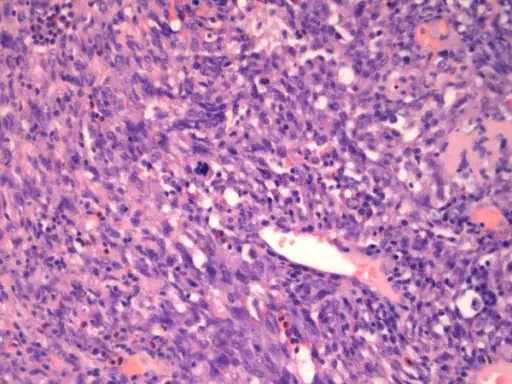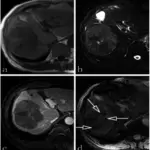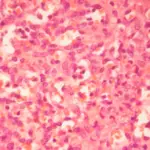Angiosarcoma is a malignant endothelial tumor ranging from extremely differentiated growths similar to hemangiomas to anaplastic lesions complex.
What is the Pathology of Angiosarcoma?
The pathology of angiosarcoma is:
-Etiology: The cause of angiosarcoma is unknown associated with the genetic factor.
-Genes involved: KDR, TP53, and PIK3CA.
-Pathogenesis: The sequence of events that lead to angiosarcoma are as the result of KDR, TP53, and PIK3CA genetic mutations.
-Morphology: The morphology associated with angiosarcoma shows small, sharply demarcated, asymptomatic red nodules.
-Histology: The histology associated with angiosarcoma shows plump atypical endothelial cells.
How does Angiosarcoma Present?
Patients with angiosarcoma typically have no gender preference present at age range of 20 to 70 years. The symptoms, features, and clinical findings associated with angiosarcoma include; extremity growing mass and demarcated, asymptomatic red nodules.
How is Angiosarcoma Diagnosed?
Angiosarcoma is diagnosed through laboratory studies profound thrombocytopenia. Imaging studies such as MRI or CT scans can show the extent of the disease. Biopsy is diagnostic.
How is Angiosarcoma Treated?
Angiosarcoma is treated through medical care which may include anthracycline-based regimens, paclitaxel, gemcitabine-based regimens. Radiotherapy and surgical care may be beneficial.
What is the Prognosis of Angiosarcoma?
The prognosis of angiosarcoma is poor 5-year survival rates are about 30%.



